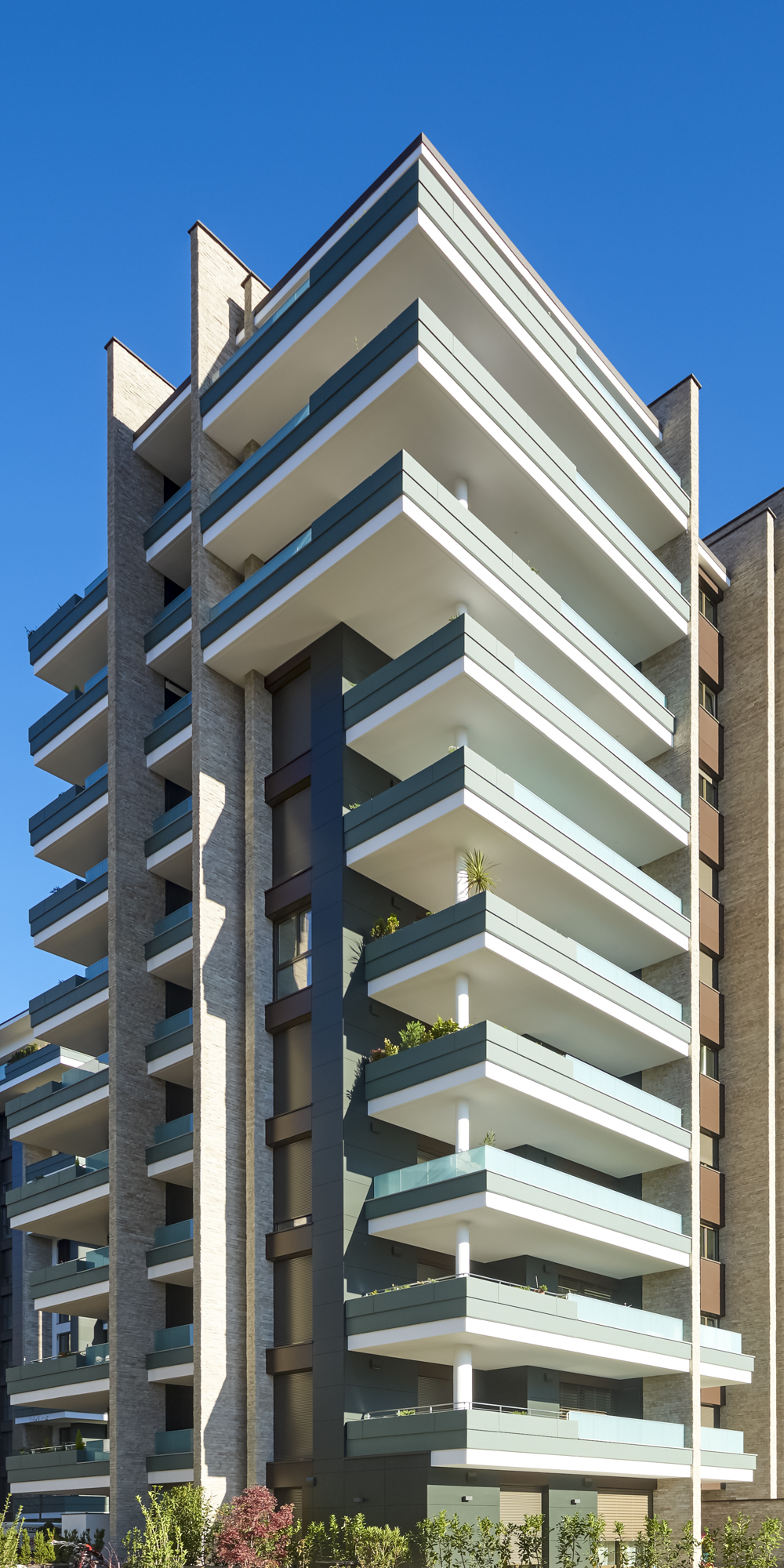DOUBLE WALL
The composite wall is a prefabricated wall element which consists of two reinforced concrete slabs with low porosity and smooth surface. The slabs are connected to each other by lattice girders. Each panel has reinforcement resulting from static calculations.
After assembling the elements on site and filling them with in-situ concrete, a monolithic wall system is created.
The double wall consists of two parallel prefabricated concrete slabs with a minimum thickness of 5 cm, connected by lattice girders. The double walls are prefabricated at the factory, delivered to the construction site, installed and finally completed with concrete from the inside. This results in a hardened monolithic cross-section.
The advantage of the double wall is the elimination of formwork on site – with much shorter construction time and two ideal surfaces. There is also the possibility of giving any texture to the external wall, obtaining a high visual effect without the need for costly on-site façade construction. The walls can have window and door openings and can be adapted for sanitary or electrical installations. The maximum wall production thickness is 40 cm.
The product features and the fast assembly of these large-area elements eliminate costly formwork elements on site and allow for a significant reduction in construction time. This shortens the time required for the laying of reinforcement and on-site formwork.
The main advantages of using these elements are: economic efficiency of the system, aesthetic effect and increased safety on the construction site.
These elements are designed and manufactured according to high design requirements and are particularly suitable for supporting structures. Planning and highly automated production takes place according to strict quality criteria.
Prefabricated products may have window and door openings in practically any size and shape. Walls can be prepared for electrical and sanitary installations.
As the production of wall elements is not linked to a modular system, a multitude of different geometric and architectural forms and correspondingly different areas of application are possible:
- Commercial and industrial buildings
- service buildings and other premises
- residential buildings
- hotel buildings
- Agricultural buildings
- Civil engineering facilities and infrastructure (tunnels, galleries)
- cellars for residential buildings (external and internal walls)
- underground garages
- Construction of watertight buildings



